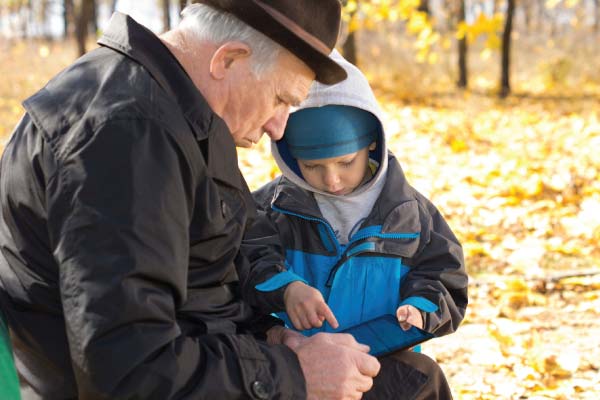There has been a recent shift from the old rule of ‘never talk to strangers’ to ‘never go anywhere with anyone without asking permission first’. This is justified by the idea that a child, who has been taught to never talk to strangers, may feel they have nowhere to go if they find themselves lost in a public place. Should you be teaching your children which strangers to ‘trust’ and how to approach an adult for help?
Parents need to describe who a stranger is; your definition compared to that of your child may be quite different. By engaging with your children to help them understand, you can save yourself and your child from a lot of stress.
A stranger is someone whom you do not know. However, some strangers, because of their occupation or position in society, can be helpful in a dire situation. Of course it’s difficult for a parent to disclose enough as, sadly, we cannot trust all adults. Children need to understand that we do not know if someone is good or bad just by looking at them. Should we be teaching children about ‘strangeness’ that requires emotional intelligence, a gut reaction or a feeling? This is linked to helping your child recognise something that doesn’t feel right and to act on those feelings. Here are five rules that can help your child be safe.
Rule One: Never Go Anywhere with Anyone without Asking Permission First
This is a fundamental rule which must never be broken. Whether it is a school, public or family function, work with your children to ensure that they always ask an adult for permission before going off with anyone.
Classic ‘what if’ scenarios are worth playing with and discussing: You are at school and walking back to class after snacks when a stranger comes up to you and says he is looking for his son’s class. He asks you to go with him to show him where it is. Do you go?
What you can do is use scenarios that are relevant to your child, such as toys, and discuss safe strategies in each case.
Rule Two: The ‘Feeling’
Children have an innate sensitive connection with feelings; this needs to be nurtured. You can call it a ‘personal alarm bell’, which we can teach them to use as this is their natural defence system. Work with your child to identify and recognise the physical and environmental signals that cause his or her alarm to sound. Knowing that a rush of adrenaline will cause physiological changes in our bodies is a good start. A child’s personal alarm bell will present the same physical and emotional cues as an adult.
Rule Three: Trust Your Instincts
Have you ever felt scared? Maybe it’s the idea of snakes, a cockroach, mice or heights that does it for you or your child. Encourage them to draw on how it feels when they get the creeps. Instincts are those feelings you get when something or someone makes you feel uncomfortable. Intuition is the physiological changes that happen to our body when our personal alarm goes off.
Physiological changes include noticing that you feel scared or nervous, your tummy feels upset, you feel hot, frozen to the spot, or your heart races. The next step is to discuss what to do with this intuition.
Rule Four: Personal Space and Safety Zone
Most children understand the concept of personal space. Some people feel comfortable within an arm’s length of others and some people do not recognise that they are invading personal space.
This is something children understand and learn. Teach your child to be aware of their surroundings. If a stranger is too close, suggest they back away and maintain their safety zone or ask what they need.
A safety zone is much bigger than your personal space — a few giant steps bigger — and ideally moving towards someone who can help with the situation.
Rule Five: Safe Places
There are times when a child must ask for help quickly and instinctively. This needs practice and confidence. We already know that strangers are not always bad; most strangers will help a child who is lost or upset.
Reinforce the concept to your child that his or her skills must always be used with all people, including those presumed safe. Encourage your child to communicate with an adult they trust, when someone or something has frightened them.
As parents we need to empower our children with self confidence and trust in their ability to sense when something is just not right. It doesn’t matter if they cannot articulate it; they just have to feel it and act upon it.





































